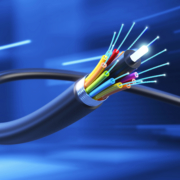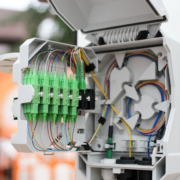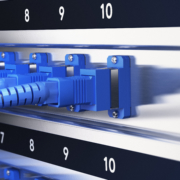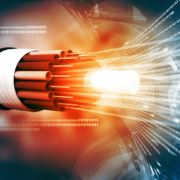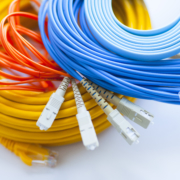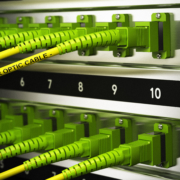Fibre Optic Cabling in Business
Enhancing Business Communication with Fibre Optics
In today’s fast-paced business environment, seamless and high-speed communication is essential for success. Fibre optic cabling plays a crucial role in ensuring businesses can transmit and receive information rapidly and efficiently. Slow or unreliable connectivity can hinder operations, impact productivity, and put companies at a competitive disadvantage. Investing in high-performance fibre optic infrastructure is key to staying ahead in the digital era.
How Does Fibre Optic Cabling Work?
Unlike traditional electrical cables, fibre optic cables use ultra-thin glass or plastic fibres to transmit data as pulses of light. This enables high-speed, high-bandwidth data transfer over long distances—often exceeding 100km—without significant signal degradation. The fibres are encased in protective glass cladding, which helps reflect light back into the core, ensuring efficient transmission.
What are the 2 types of fibre optic cables?
It’s important to understand the difference between single mode and multimode fibre the two main forms of fibre cabling:
- Single Mode: The core size of single mode fibre cables is very thin and this is where its innovation lies. Thanks to the thin core, light signals can travel directly through the core without the risk of bouncing off the internal sides of the cable. This significantly reduces the amount of light reflection created during transmission. The signal benefits from a sustained quality and, as a result, is able to travel successfully over long distances. Single mode cables are typically used to power the internet and telephone applications.
- Multimode: The size difference, when it comes to the cable core, is noticeably larger in multimode cables. In fact, the diameter can be up to ten times larger than single mode cables. Greater light gathering capacity is the main benefit from this difference. This allows light to travel along a number of different paths within a cable. Whilst these cables can only transmit signals over short distances they are perfect for connecting internal computer networks.
What is Fibre to the Desk?
You may have heard the term “Fibre to the Desk” before, but unless you’re a communications professional, you might not be familiar with its meaning. Thankfully, it’s a straightforward concept. Fibre to the Desk refers to a cabling system that directly connects end users to fibre optic cables, providing a high-speed, high-bandwidth connection right to their workspace. This is in contrast to “Fibre to the Office,” where fibre is typically converted to copper cabling locally to connect users. Fibre to the Desk offers enhanced performance and speed, making it a superior solution due to its direct and simple setup.
How Can You Test Fibre Optic ?
Fibre optic cables, as with any form of technology, are prone to wear and tear along with failures. Being able to test these cables is essential in maintaining them. The best way for testing the integrity of fibre cabling is through an Optical Time Domain Reflectometer – OTDR testing. The OTDR is able to compose a comprehensive picture of the state of fibre cables. It can be used to analyse splice loss, find faults and accurately measure lengths. Performance or structural problems of your cabling system can then be identified and rectified.
How do they install Fibre Optic Cables?
Installing fibre optic cables involves careful planning, trenching, or using existing ducts for cable routing. Technicians lay down fibre cables, ensuring they are properly secured and protected. They then splice the fibres, connecting them to the desired endpoints. Testing is conducted to ensure optimal performance and signal strength.
For more information on fibre optic cabling installations please visit our Data Cabling page.
Also see PON networks – Passive Optical Network Installation
Find out how fibre optic can support the growth of your business, don’t hesitate to get in touch. Call 020 3912 6200

